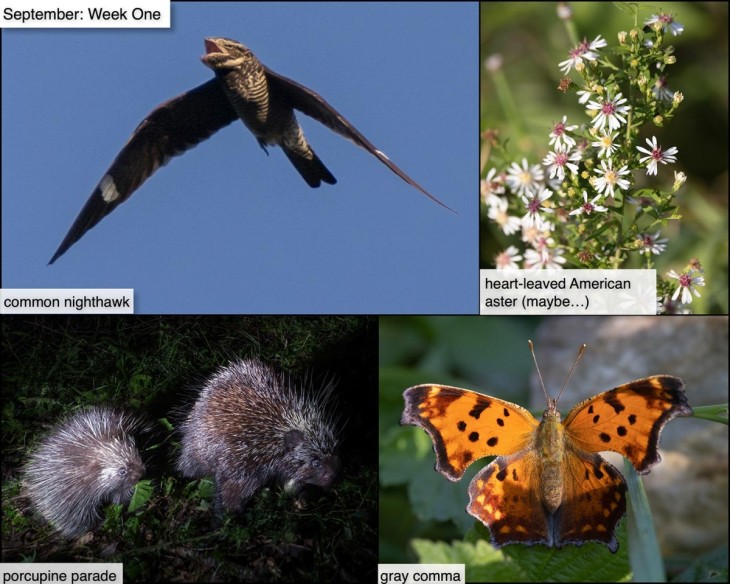This past weekend, we were lucky enough to be standing in the middle of a field when a migratory flock of twelve common nighthawks came flying down the Ompompanoosuc River Valley. Nighthawks are acrobatic flyers, and it’s a treat to watch them swooping and diving across the sky, as they pursue high-flying swarms of insects. Instead of snagging prey with their beaks, nighthawks simply inhale them in whale-swimming-through-krill fashion. The bird in this photo had just inhaled an insect, a fraction of a second before. Nighthawks are early migrators, and typically pass through our region in the last days of August and the first week of September. They’re on their way to South America.
It's aster high season, and in a walk across the meadow, you’re bound to find multiple specimens of these tough, late-blooming flowers, which play an important role (along with goldenrod, Joe Pye weed, and a few others) as common food sources for late-season pollinators. There are many different species, and we’ve long despaired of conclusively identifying all of them, but our best guess, based on this plant’s lower leaves (not pictured) is that it’s a common species in our region, heart-leaved American aster.
Pumpkin bright comma butterflies are back and flitting through forest openings and weedy fields. We found this gray comma perched by a hedgerow. It appeared to still be in the brand-new stage of drying its wings, or unusually tolerant of close inspection. Gray comma caterpillars feed on gooseberry plants, and the butterflies produce two broods per year. The adults you see now will overwinter, hiding out in bark crevices and other sheltered spots. (Note: a good way to distinguish a gray comma from an eastern comma is to check out its underwings. Grays have thin comma markings, whereas eastern comma “commas” are typically a bit thicker, with hooks.)
Finally, our game camera revealed porcupines on parade – a mother closely followed by her porcupette. This little one would have been born in late spring or early summer, and is probably weaning soon, if it hasn’t already.
What have you noticed in the woods this week? Submit a recent photo for possible inclusion in our monthly online Reader Photo Gallery.



Discussion *